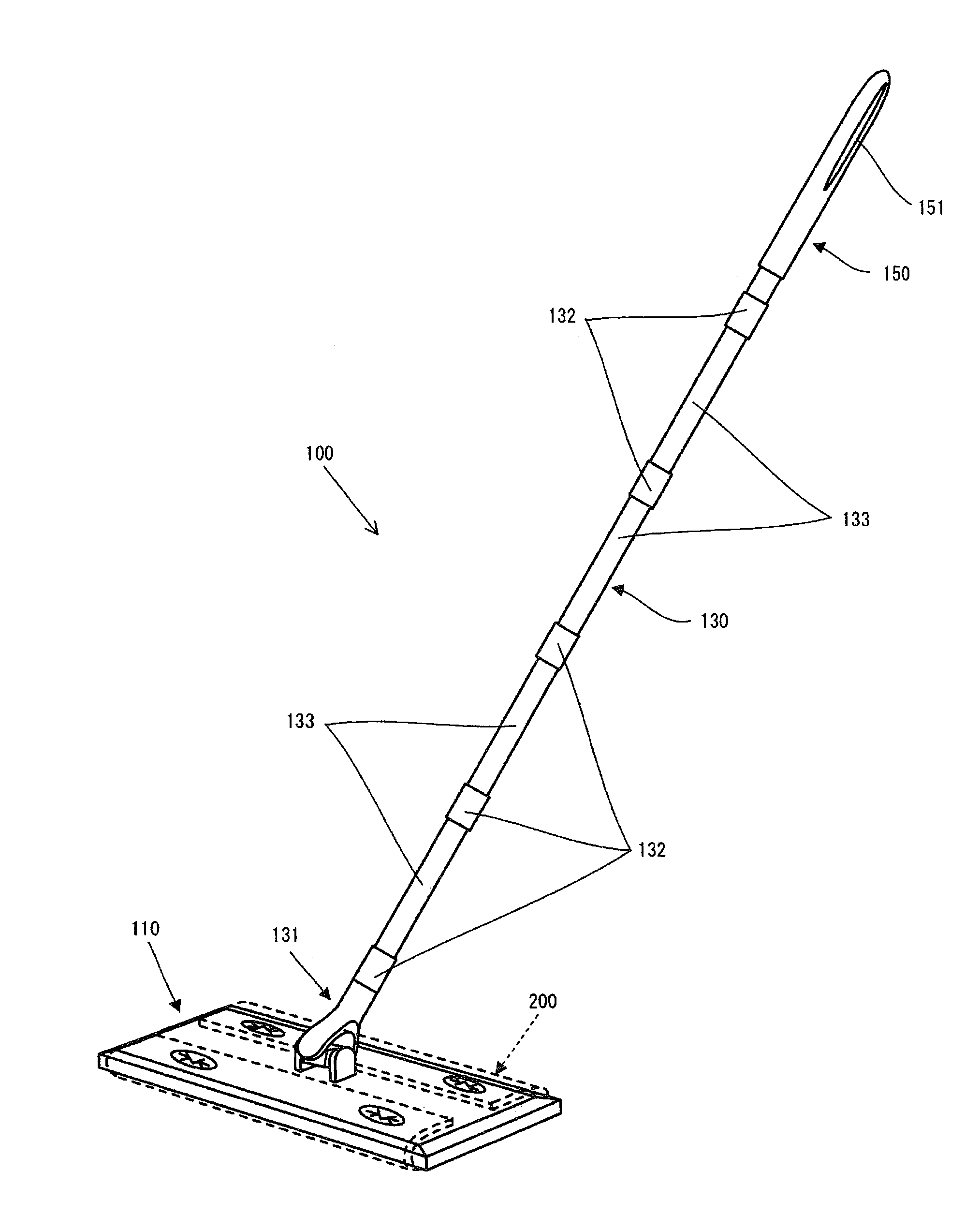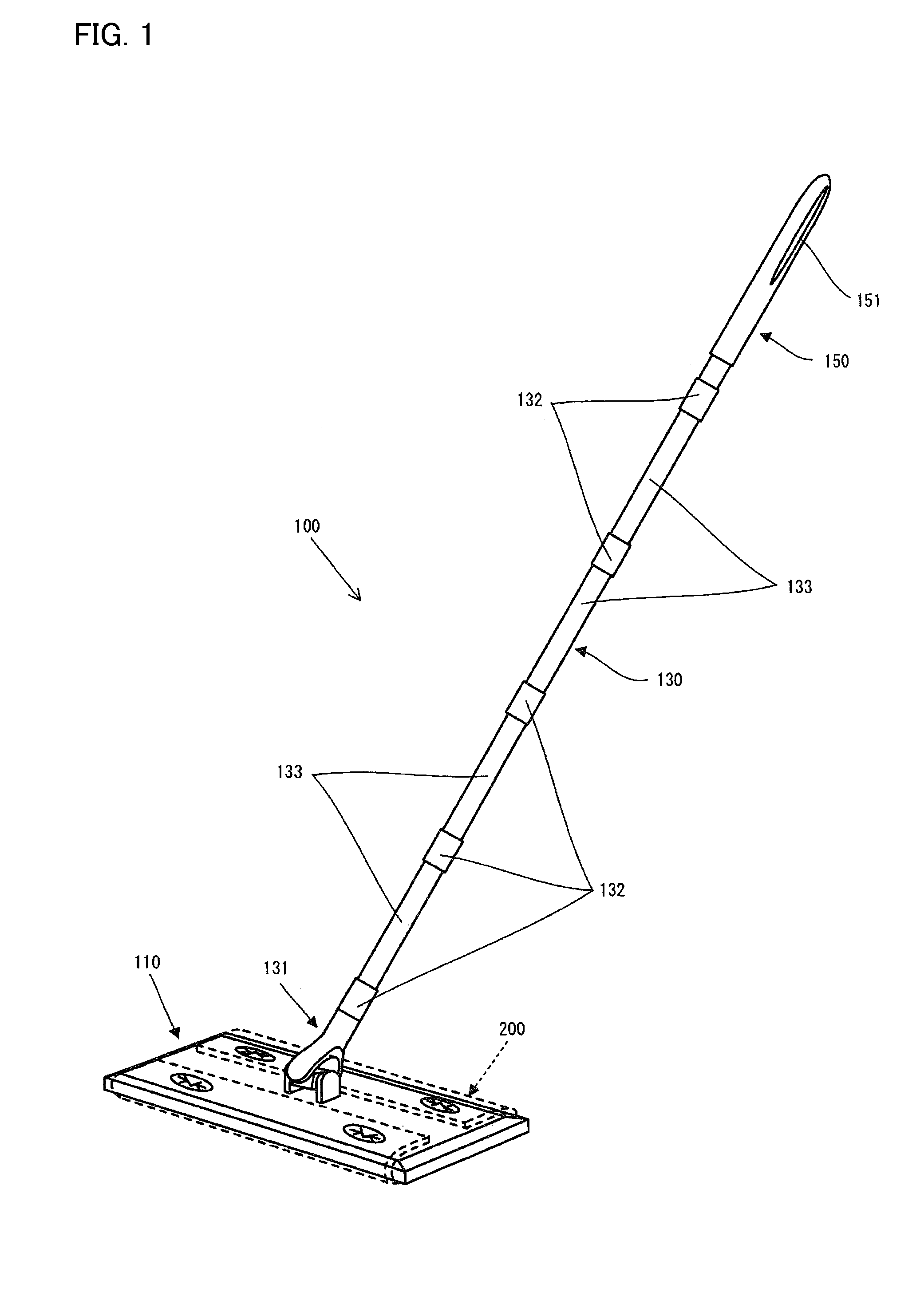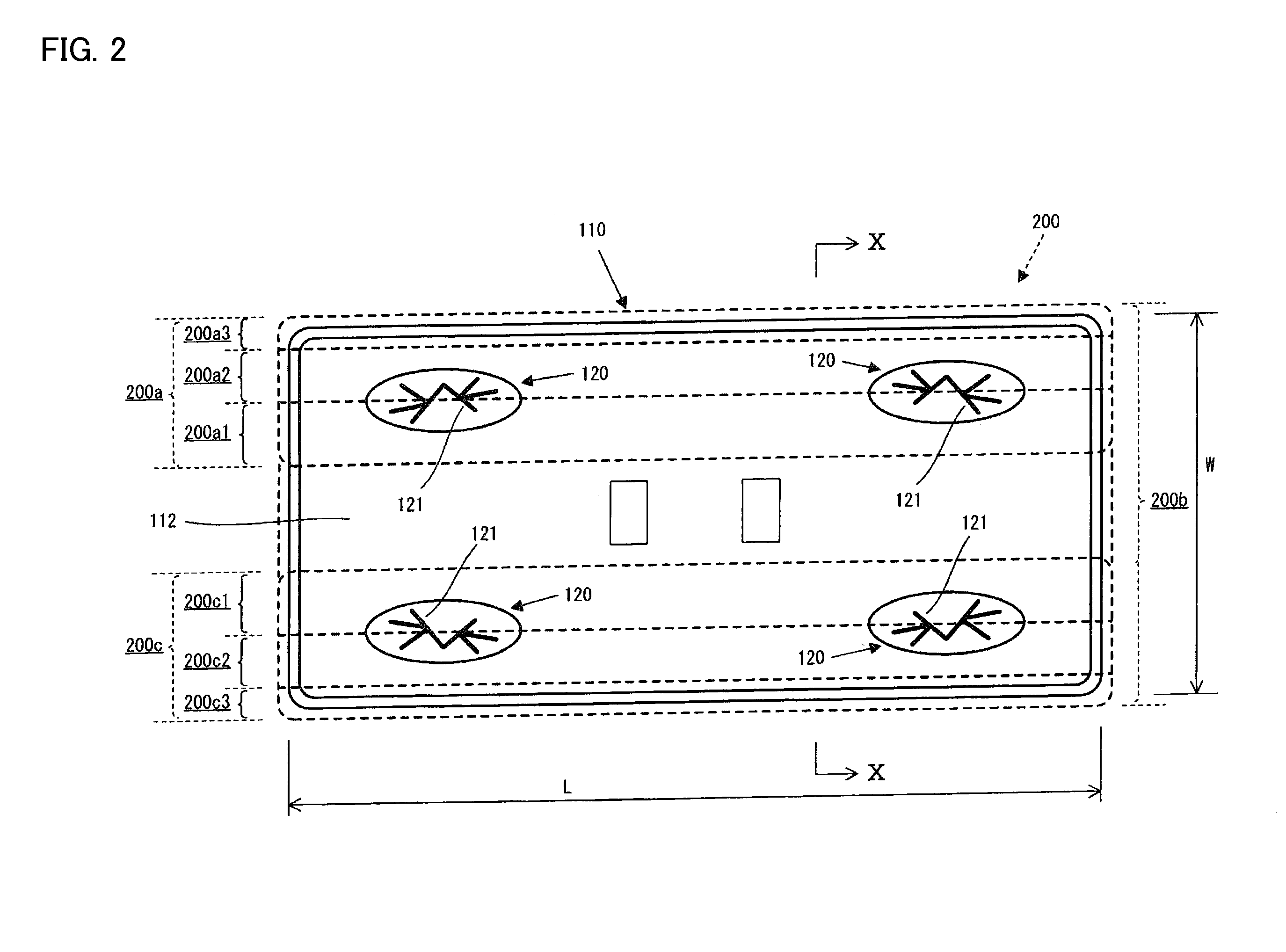Cleaning sheet and cleaning tool
a technology applied in the direction of carpet cleaners, cleaning machines, vehicle cleaning, etc., can solve the problems of tensile stress on the end of the cleaning sheet held by the holding member, and the difficulty of avoiding the known cleaning sheet, so as to enhance the use of cleaning sheets and cleaning tools.
- Summary
- Abstract
- Description
- Claims
- Application Information
AI Technical Summary
Benefits of technology
Problems solved by technology
Method used
Image
Examples
embodiment 1
[0096]Embodiment 1 has the construction shown in FIG. 12. Each of outer layer sheets 220, 230 has a width of 190 mm and has one end in the width direction which is folded so that folded part 220a or 230a is formed. The folded parts 220a, 230a have a length T1 of 20 mm. The outer layer sheets 220, 230 are arranged on both sides of an inner layer sheet 210. In each embodiment, hot embossing is performed on a needed area, which is not particularly specified.
[0097]In embodiment 1, a first part 200a1 (200c1) or the first member X having a lower elongation rate has a two-layer structure having the outer layer sheets 220, 230. A second part 200a2 (200c2) or the second member Y having a higher elongation rate has a single-layer structure having the outer layer sheet 220 (230). Further, the CD direction of the outer layer sheets 220, 230 coincides with the width direction of the sheet (the horizontal direction in FIG. 12).
[0098]According to the embodiment 1, the first member X has the elonga...
embodiment 2
[0099]Embodiment 2 has the construction shown in FIG. 13. Each of outer layer sheets 320, 330 has a width T of 170 mm. The outer layer sheets 320, 330 are arranged on both sides of an inner layer sheet 310, and outer layer sheets 340, 350 having a width K of 20 mm are arranged on the both ends (edges) of the sheet in the width direction.
[0100]In embodiment 2, a first part 300a1 (300c1) or the first member X having a lower elongation rate has a two-layer structure having the outer layer sheets 320 (330), 340 (350). A second part 300a2 (300c2) or the second member Y having a higher elongation rate has a single-layer structure having the outer layer sheet 320 (330). Further, the CD direction of the outer layer sheets 320, 330 coincides with the width direction of the sheet (the horizontal direction in FIG. 13), and the MD direction of the outer layer sheets 340, 350 coincides with the width direction of the sheet.
[0101]According to the embodiment 2, the first member X has the elongatio...
embodiment 3
[0102]Embodiment 3 has the construction shown in FIG. 13. Each of the outer layer sheets 320, 330 has a width T of 170 mm. The outer layer sheets 320, 330 are arranged on the both sides (edges) of the inner layer sheet 310, and 70 g / m2 spunbond nonwoven fabrics (SB) 340, 350 having a width K of 20 mm are arranged on the both ends (edges) of the sheet in the width direction.
[0103]In embodiment 3, the first part 300a1 (300c1) or the first member X having a lower elongation rate has a two-layer structure having the outer layer sheet 320 (330) and the 70 g / m2 spunbond nonwoven fabric 340 (350). A second part 300a2 (300c2) or the second member Y having a higher elongation rate has a single-layer structure having the outer layer sheet 320 (330). Further, the CD direction of the outer layer sheets 320, 330 coincides with the width direction of the sheet (the horizontal direction in FIG. 13).
[0104]According to the embodiment 3, the first member X has the elongation rate of 0.06 mm / N, and th...
PUM
 Login to View More
Login to View More Abstract
Description
Claims
Application Information
 Login to View More
Login to View More - R&D
- Intellectual Property
- Life Sciences
- Materials
- Tech Scout
- Unparalleled Data Quality
- Higher Quality Content
- 60% Fewer Hallucinations
Browse by: Latest US Patents, China's latest patents, Technical Efficacy Thesaurus, Application Domain, Technology Topic, Popular Technical Reports.
© 2025 PatSnap. All rights reserved.Legal|Privacy policy|Modern Slavery Act Transparency Statement|Sitemap|About US| Contact US: help@patsnap.com



